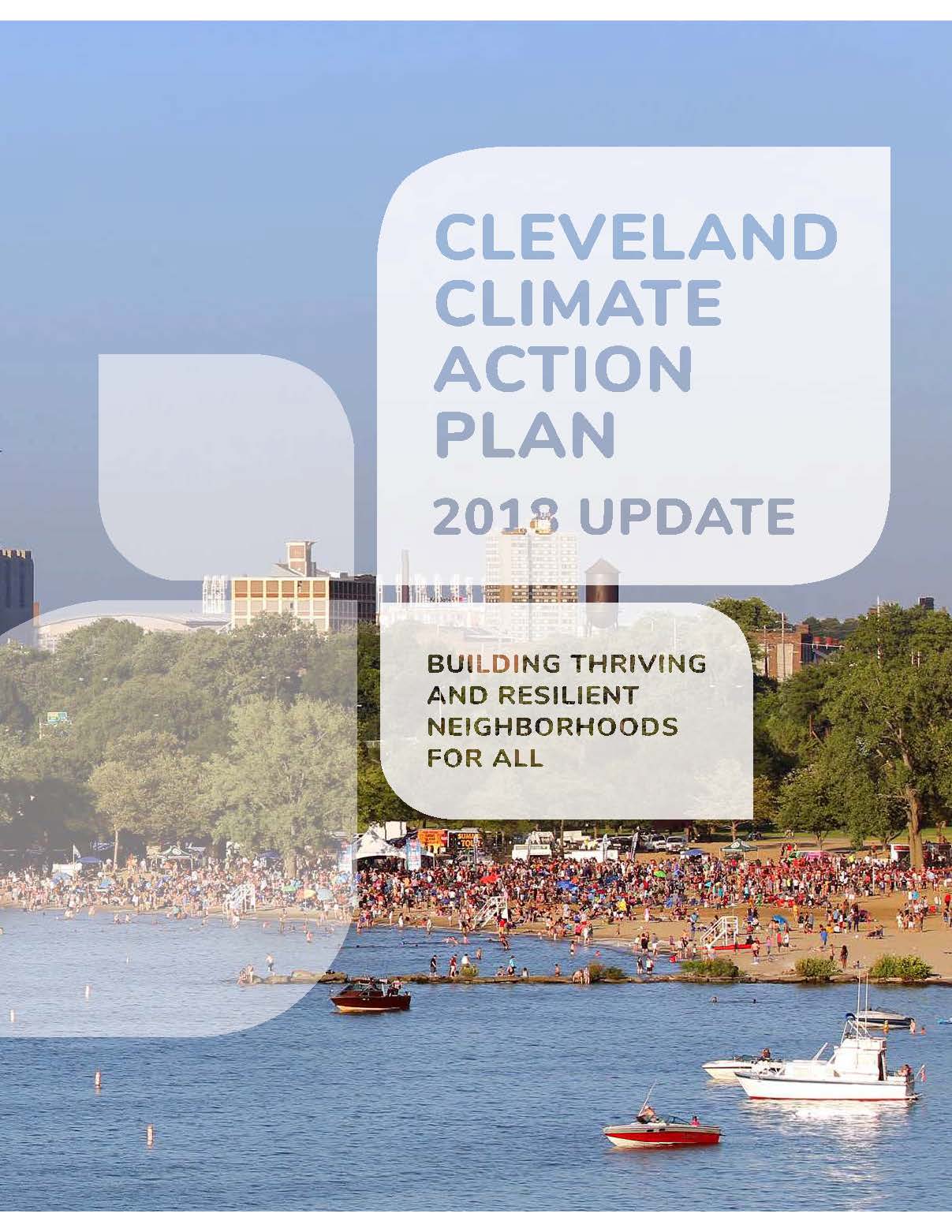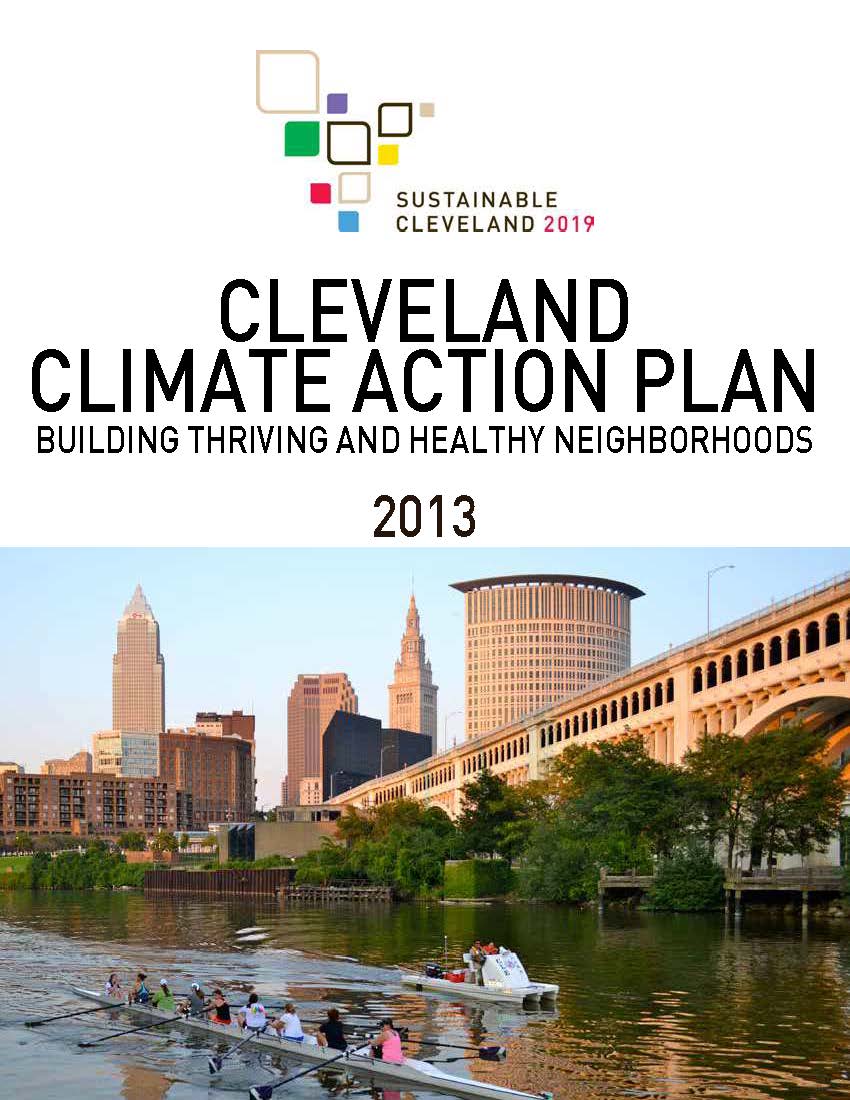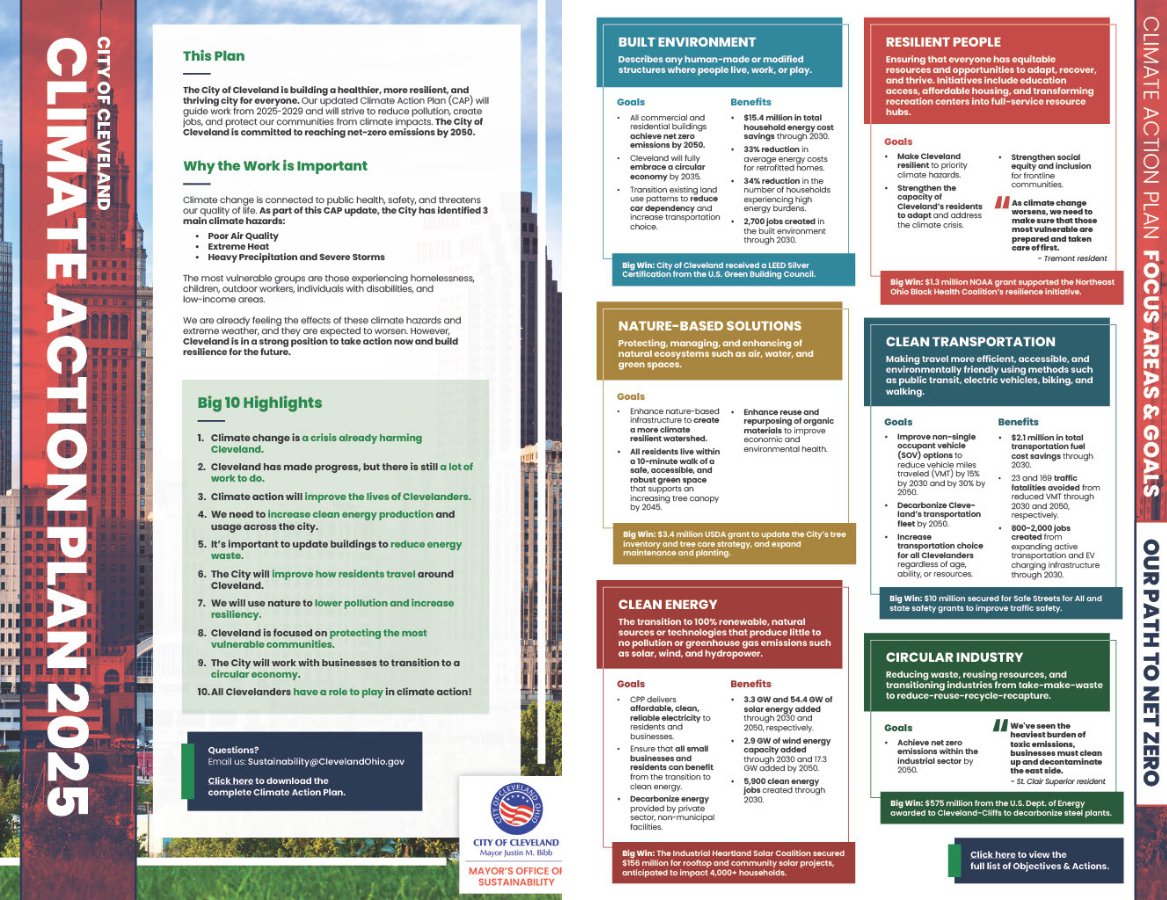
Explore the Climate Dashboard
The City of Cleveland, in partnership with ICLEI USA Clearpath 2.0 has launched our new Climate Action Plan Dashboard. An interactive tool showing exactly how we’re tackling climate change on our path to net zero. Our new CAP Dashboard lets YOU:
- See the city’s progress on cutting emissions
- Learn about the projects making our neighborhoods greener
- Track 160+ actions with real-time updates on our climate goals
The Cleveland Climate Action Plan
The Cleveland Climate Action Plan (CAP) 2025 update is the community's strategic roadmap, guiding our work from 2025-2029.
This comprehensive plan is designed to reduce pollution, create jobs, and protect our communities from climate hazards. Rooted in community engagement, the CAP brings residents, businesses, and partners together to work towards net-zero emissions.
Focus areas:
- Built Environment: Any building or place where people live, work, or play.
- Clean Energy: Renewable power for all
- Clean Transportation: Making travel more efficient, accessible, and environmentally friendly.
- Nature-Based Solutions: The protection, management, and enhancement of natural ecosystems such as air, water, and green spaces.
- Resilient People: Healthy, informed, and connected communities.
- Circular Industry: Reducing waste and pollution in the industrial sector.
Cross-Cutting Priorities
In addition to the Focus Areas, the City of Cleveland has identified key Cross-Cutting Priorities—critical themes that support climate justice and weave across all areas of the plan. These priorities ensure that equity, health, and opportunity are at the center of our climate solutions.
View/Download the Cleveland Climate Action Plan
*The CAP is updated on a five-year cycle
CAP Materials & Resources
The Cleveland Climate Snapshot gives an at-a-glance look at how the city is fighting climate change and working for a cleaner, safer future for all.
The Community Action Toolkit shows how you can get involved, take action, and help make your neighborhood stronger and healthier—with simple info about climate change and steps you can take.
The Appendices include helpful data, like the Climate Risk and Vulnerability Assessment and the Climate Action Implementation Plan, to show where the city is most affected by climate change and how we're taking action.
Former CAPs

The Cleveland Climate Action Plan 2018 update built on the foundation of the original 2013 plan, creating a more community-centered and equity-focused framework for sustainability and resilience. Developed with input from residents and external stakeholders, this updated plan reflects Cleveland’s strengthened commitment to climate action in the face of global challenges — especially after the U.S. withdrawal from the Paris Climate Agreement.
The plan follows, then-Mayor Frank G. Jackson's response after joining hundreds of Climate Mayors across the country in declaring “We Are Still In" (nka America Is All In), reaffirming Cleveland’s leadership in building a cleaner, greener, and more just city.
This updated CAP introduced five (5) updated focus areas and four (4) cross-cutting priorities, aligning local climate action with broader community goals around health, equity, economic opportunity, and innovation. Each action in the plan was evaluated using a Racial Equity Tool, ensuring that equity remained central to decision-making and implementation.
Green Building & Energy Efficiency
Clean Water & Vibrant Green Space
Clean Energy
Sustainable Transportation
More Local Food, Less Waste
 The Cleveland Climate Action Plan 2013 was the City of Cleveland’s first-ever framework to address climate change and build a sustainable, resilient future. Developed through collaboration with advisory members and the broader Cleveland community, the plan built on the momentum of Sustainable Cleveland 2019 initiative and reflected the city’s commitment to climate leadership following the Mayor’s Climate Protection Agreement in 2006.
The Cleveland Climate Action Plan 2013 was the City of Cleveland’s first-ever framework to address climate change and build a sustainable, resilient future. Developed through collaboration with advisory members and the broader Cleveland community, the plan built on the momentum of Sustainable Cleveland 2019 initiative and reflected the city’s commitment to climate leadership following the Mayor’s Climate Protection Agreement in 2006.
The plan focused on six (6) core areas to reduce greenhouse gas emissions, strengthen neighborhoods, and improve public health:
Energy Efficiency & Green Building
Advanced & Renewable Energy
Sustainable Mobility
Waste Reduction & Resource Management
Land Use & Clean Water
Community Engagement & Public Health
The plan highlighted the business case for climate action, emphasizing local job creation, cost savings, healthier neighborhoods, and improved air and water quality. It also underscored the unique role cities like Cleveland play in both mitigating emissions and adapting to climate impacts.
Ultimately, the 2013 CAP served as a foundational roadmap, setting the stage for positioning Cleveland as a “Green City on a Blue Lake.”
SustainableCLE Newsletter!
Sign up to get updates on local sustainability efforts, climate action, and ways to get involved.
